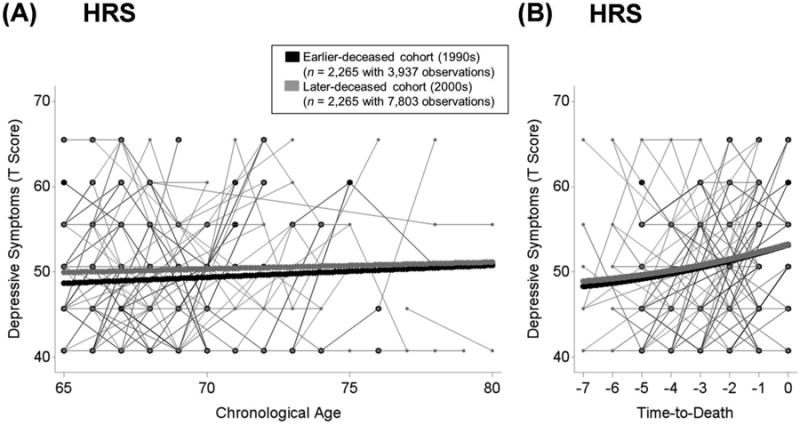Figure 2.

Illustrating differences in depressive symptoms between death-year cohorts in the HRS from age 65 to age 100 (Panel A) and in terminal decline across the last 7 years of life (Panel B). Plot includes raw data from 100 earlier-deceased (1990s, black lines) and 100 later-deceased (2000s, grey lines) participants. Death-year cohorts were matched on age at death and education and models additionally residualized for differences in gender, education, frequency of observations, and number of health conditions (mortality-related model also residualized for age at T1 and at death). Results revealed no evidence for secular trends favoring the later-deceased cohort. Panel A: HRS participants who died in the 2000s (thick grey lines) did not differ from those who died in the 1990s (thick black lines) in trajectories of well-being over age. Panel B: Over time to death, participants who died in the 2000s (thick grey lines) did not differ from participants who died in the 1990s (thick black lines).
